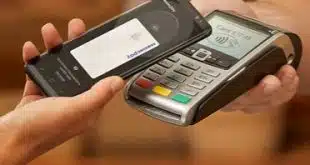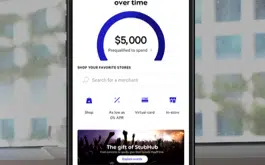Loop, a mobile wallet that uses a case or fob to generate its own contactless field to communicate with many payment terminals, has launched for the latest iPhone models.
The brainchild of payments veterans George Wallner, founder of point-of-sale terminal maker Hypercom Corp., now Equinox Payments LLC, and Will Graylin, founder of POS companies Roam Data and Way Systems Inc., Loop consists of a smart phone app and an accessory to transfer credit and debit card track data to the app.
It works like this: After downloading the free Loop Wallet from Apple Inc.’s iTunes store, the user connects a Loop device to the phone. An Android app is expected in the second quarter. Currently, Loop sells cases for the iPhone 5 and 5S for $99, and a fob that plugs into an audio jack for $39.
The next step for the consumer is to create an account and load his payment, loyalty, and gift card data into the app. That is done by swiping a magnetic-stripe card through the reader on the fob. The case comes with a separate reader.
To make a transaction, the consumer opens the app and selects a card. Then she places the Loop accessory, whether it’s the case or the fob, near the payment terminal and presses a button on the accessory to initiate a payment.
The accessory uses technology to create a magnetic field that can be read by any magnetic-stripe reader in payment terminals. The signal emulates the same magnetic field change as when a mag-stripe card is passed through a reader. Loop has patents on its technology.
“This will work with any POS terminal that has a mag-stripe reader,” Will Graylin, Loop chief executive, tells Digital Transactions News. Transactions are processed as card present.
Loop also works in detached mode, when the consumer has just the fob or the case. In these instances, the device holds a single card. Transactions are initiated by pressing a button on the fob or case. The phone and app are needed if the consumer does not want to use the default card, which is designated within the app.
Loop would not say specifically how it makes money, but notes its focus now is on getting its technology into various form factors and working with its partners to use the technology in their devices, a spokeswoman says. “We currently sell accessories and have a much bigger plan of using Loop as a channel to serve customers with savings, deals and loyalty programs,” she says.
Neither the coming of chip cards using the Europay-MasterCard-Visa standard nor near-field communication should erode Loop’s position, Graylin says. Payment terminals are expected to have mag-stripe readers for many years, he says. Loop’s distinction today is that it can bypass many of the hurdles facing mobile payments, he says.
Loop, because it uses the existing payment system, requires no changes by merchants or their acquirers, he says. “The biggest problem that mobile payments to date has faced has really been the acceptance side,” Graylin says. “That’s probably the Mount Everest of problems. Everything else can be solved systematically one customer at a time.”
NFC-based mobile payments requires contactless reader, and other schemes rely on bar-code scanning technology that merchants must install and train their staffs to operate.
“If you can’t have acceptance, you won’t be able to have a satisfying customer experience,” Graylin says. “The fragmented POS system is the most challenging part of unlocking mobile commerce. We can have all kinds of fancy apps, but if they do not talk the POS systems, it is not truly a mobile wallet.”
Loop’s ability for acceptance with existing POS terminals has potential, says Beth Robertson, a payments consultant. “The patented feature offered by Loop to enable a magnetic stripe read from a mobile device is a great concept for accelerating the use of mobile devices at the point of sale,” Robertson says. “It makes the mobile device as ubiquitous a today\'s payment cards.”
Loop is not the only mobile-wallet company to use magnetic-field technology. In January, developer 1Oak Technologies launched the Sequoia app that also creates a magnetic-stripe signal.





